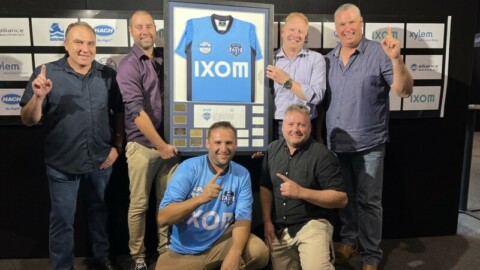SA Water’s new $4 million odour control unit in Whyalla is now under construction, in order to better manage the sewer network odour in certain areas of the regional city.
The unit – which is an intricate system of filters, pipes and valves – will connect to the sewer network through an existing pipe on Billing Street, where it can extract and treat odorous gases such as hydrogen sulphide.
A biofilter and activated carbon filters will be responsible for treating the gases through a staged process which breaks down odorous compounds and removes any remaining gases by adsorption.
SA Water’s Senior Manager of Infrastructure Planning and Strategy, Dr Daniel Hoefel, said that the unit will reduce odour naturally released from the network to help minimise the impact on local residents.
“While it’s normal to have some odour coming from our sewer infrastructure, we make every effort to ensure it’s not noticeable to the community,” Dr Hoefel said.
“Over the past few years, we’ve tracked the movement of odour from our sewer network in Whyalla, by deploying sensors to understand which areas experience higher levels and inform potential solutions.
“Through this work and by gaining feedback from the community on localised odour hotspots, we identified an odour control unit as a long-term infrastructure solution to significantly reduce odour emission from our sewers.
“The new unit is being strategically constructed on a vacant parcel of land on Billing Street in Whyalla Playford, due to its proximity to a large sewerage pipe – which we pinpointed through our odour monitoring as a source of elevated odour – and will occupy an area of around 270m³.”
Dr Hoefel said that more than 2.5 million litres of sewage travels through this particular pipe each day before it arrives at the local treatment plant, carrying with it naturally-occurring gases such as hydrogen sulphide.
“While safe at the low levels emitted by our sewers, the gases are responsible for creating the unpleasant odour some people may have noticed at times.
“The odour control unit will connect into the sewer network and pull this gas out using two large extraction fans and treat it through a combination of a biofilter and activated carbon filters.
“Biofilters harness air to help microorganisms break up organic material in sewage gases, while the carbon filters neutralise smells by trapping molecules through adsorption – eliminating around 99.9 per cent of odour.”
Dr Hoefel said that once treated, the clean, odourless air will be released from the unit by a 15m-tall vent stack.
“As part of this project, we’re also removing several chimney-styled vents that currently release odour from the sewer network to limit the build-up of hydrogen sulphide, which will further help improve odour management.”
Work to construct the odour control unit will be undertaken between 7am and 5pm, Monday to Saturday, and is expected to be completed by mid-2024.



















